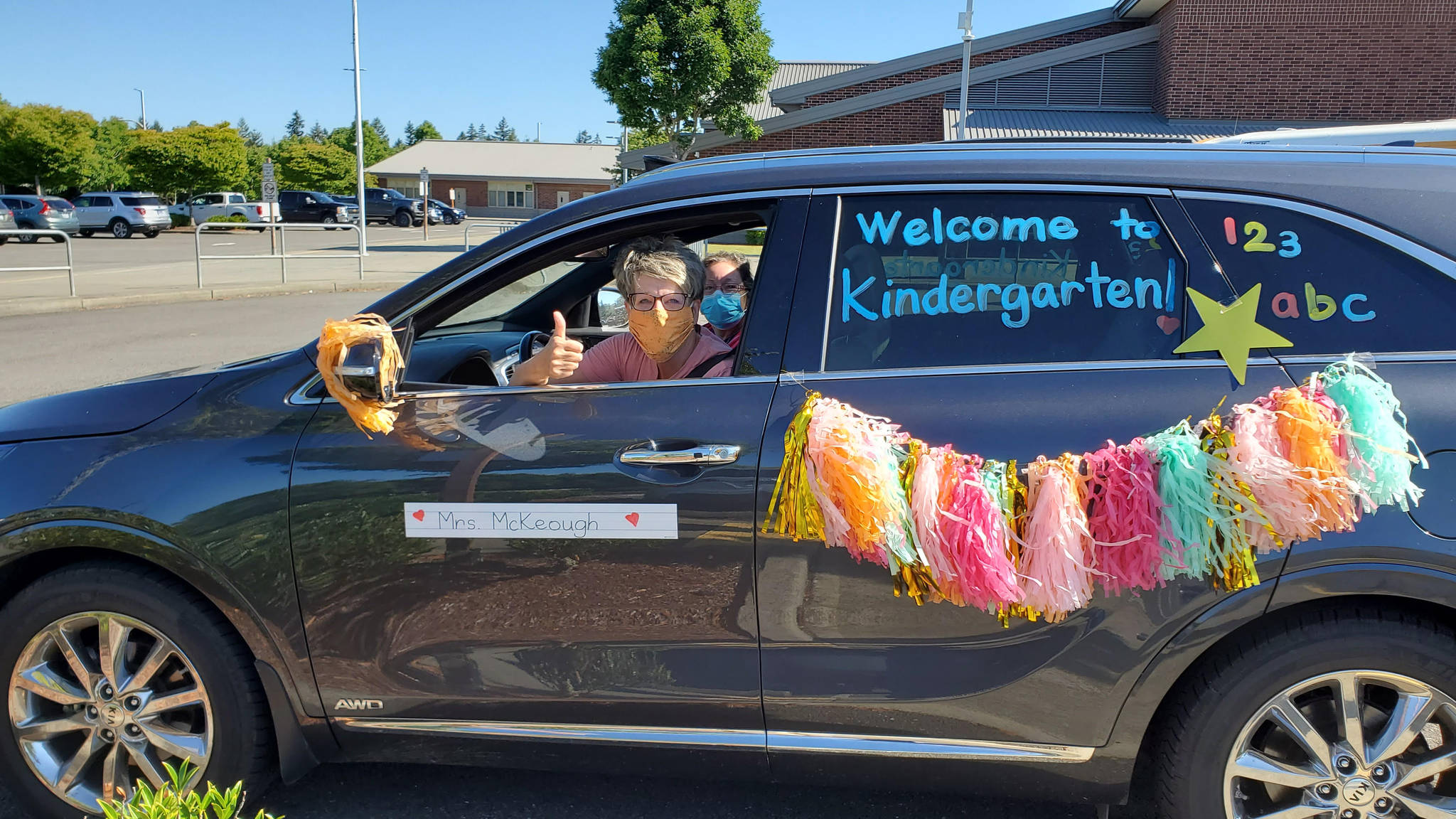Come Sept. 9, those familiar yellow buses will be chugging along once more on Auburn’s streets, and teachers will greet students with their best first-day-of-school smiles.
But in this weird year of COVID-19, teachers will direct those smiles not at 25 or so apple-cheeked faces in front of them, but on computer screens.
And for now, those buses won’t be ferrying kids to and fro — only educational materials and meals to homes throughout the Auburn School District where most of the 17,000 students will begin the year by opening their Chromebooks and logging on to meet with their new teachers.
It won’t be like school last spring, when the pandemic burst on the scene and the Auburn School District, like school districts everywhere without time to prepare, found itself scrambling in emergency mode.
Distance learning will be the starting mode, and until the pandemic abates to the satisfaction of the King County health department and others up the chain, distance learning will remain.
This is not what anyone — parents or teachers — would have chosen if they’d had their druthers.
“I don’t know of any educator who, besides for health and safety reasons, doesn’t want to be back with kids face-to-face,” said Dr. Alan Spicciati, superintendent of the Auburn School District. “We want to bring kids back in person as soon as the health department advises that we do so.”
It all begins at 8:40 a.m. Sept. 9 for ASD’s 15 elementary schools and at 9:35 a.m. for all middle and high schools. Indeed, for 90-plus percent of the district’s students, Spicciati said, the school day will be more or less what it has always been.
But not for all.
Earlier this year, several hundred working parents made a special ask of the district: could it offer instruction in the late afternoon or early evening after they return home from work so they can help their kids?
Yes, the district said, and went on to develop an elementary school program that will replicate the day program, only later on, and families can sign up for it.
At the moment, the district is designing a virtual classroom to accommodate as many students as possible. Scheduled learning will be between 4:30 p.m. and 7:45 p.m., and the teachers will design learning activities for the rest of the time
“We have set it up so literacy would happen before dinner, math would happen after dinner, so everything would happen when the parent is at home and available to help. This is for a few hundred students, but we don’t know exactly how many there’ll be at this time. Those families asked for that flexibility, and we are pleased to be able to offer that,” Spicciati said.
The district decided months ago that it would start school online so it could train all of its staff in distance learning.
And the preparation has been intense.
For the past two weeks, 1,200 teachers have been attending training on the Distance Learning Playbook, an instructional resource for teaching online while still carrying over best-teaching practices into this funky new reality.
Spicciati said the district learned a lot last spring about holding virtual class meetings, and out of that experience, it developed a plan to pull all of the kids together in a virtual class for live group instruction on Google Meet, five and a half hours a day, five days a week.
That doesn’t mean, however, that kids will be in front of the computers for that length of time. There will be time with teachers and time for independent work, either on the computer or with a book or via another instructional resource. For a portion of the day, the entire class will meet, and for another portion of the day, teachers will meet with small gruops.
Spicciati said the district has enough Chromebooks to accommodate every student from kindergarten to 12th grade.
“We have checked out hundreds of Chromebooks to our elementary students, and we will continue to do that for any family that feels it needs another device at home. We are also supporting families that don’t have home internet access. We’ve alreaady provided hot spots to hundreds of families, and we have the capacity to do more as we find more families that have that need,” Spicciati said.
Class sizes will be as they are in traditional school.
The district has sent home instructional kits to the homes of all elementary-age students so they’ll have the sort of hands-on resources kids of that age need.
“We have encouraged teachers not only to have daily contact with students, but also to design activities so students can work offline, so screen time will be limited, but learning continues,” Spicciati said.
For career and technical courses, Spicciati said, the district has already sent out hands-on materials.
Tami Petrina, executive director of Student Special Services for the Auburn School District, notified parents in a recent letter that most students enrolled in special education services will participate with their peers in “a more structured and intensive distance-learning model.”
Teachers and therapists, she said, will return to work and begin scheduling services, much as they do during any new school year.
“Limited in-person services will likely be necessary for a small number of students with Individualized Education Plans (IEPs) and the district will provide decision-making guidelines to IEP teams for consideration, with student and staff health and safety as top priority. All students with IEPs will receive at least some of their instruction through distance learning,” Petrina said.
“We are working to develop structures for limited in-person services that include staff support, schedules that support continued access to general education (distance learning format), and access to transportation. These plans are currently in development. We recognize that there are challenges related to distance learning that many of our families face. Our schools are committed to supporting you and your child to overcome those challenges,” Petrina wrote.


